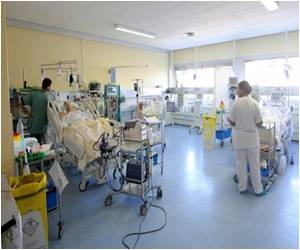A joint UCLA/RAND Corporation study addressed the prevalence and cost of critical care therapies provided in intensive care units (ICU), were perceived by physicians as futile.

Advances in medicine have enabled critical care specialists to save lives under extraordinary circumstances. According to researchers, an admission into the ICU should be considered a therapeutic trial where aggressive critical care should transition to palliative care if further medical interventions will not achieve an acceptable health state for the patient.
Intensive care interventions that sustain life without achieving an outcome that the patient can meaningfully appreciate are often perceived as "futile" by health care providers.
Previous studies of ICU physicians in the U.S., Canada and Europe have shown that futile care occurs. The UCLA/RAND team wanted to better quantify the prevalence and cost of physician-perceived futile treatment in adult critical care.
"Recognizing and quantifying the prevalence and cost of futile treatment is the first step towards refocusing medical treatments to those that are more likely to benefit patients," said first author Dr. Thanh Huynh, clinical instructor for medicine, division of pulmonary and critical care medicine, David Geffen School of Medicine at UCLA.
"Futile treatment occurs in hospitals across the country," said senior author Dr Neil Wenger, professor of medicine in the division of general internal medicine and health services research, director of the UCLA Healthcare Ethics Center, David Geffen School of Medicine at UCLA and consulting researcher with RAND, "We have fantastic technology available in ICUs that saves lives, but we also need to address how to use it appropriately when the patient may not benefit from such high intensity measures."
Advertisement
"If we can identify the factors that promote futile treatment, perhaps we can also develop the interventions to decrease it and refocus treatments to better serve patients in the ICU," said Huynh.
Advertisement
The team then developed a survey and asked critical care providers daily for three months (December 2011 to March 2012) to assess whether their patient was receiving: futile treatment; probably futile treatment; or not receiving futile treatment.
Researchers analyzed 6,897 assessments on 1,125 patients. The team found that 904 patients (80 percent) did not receive futile treatment, 98 patients (9 percent) received probably futile treatment, and 123 patients (11 percent) received futile treatment.
The most common reason why treatment was perceived as futile was that the burdens of aggressive therapy grossly outweighed its potential benefit. Other reasons included treatment could never achieve the patient's goals, death was imminent, the patient would never be able to survive outside of an ICU and the patient was permanently unconscious. Most patients had more than one reason that their treatment was considered futile, according to researchers.
Study findings provided insight into which patients were more likely to be assessed as receiving futile treatment. Patients admitted from a skilled nursing facility or long term care acute center were more likely to be assessed by physicians as receiving futile treatment, suggesting that patients whose health was already sufficiently compromised were less likely to benefit from critical care.
Eighty-five percent of the 123 patients who received futile treatment died within six months and most during the hospitalization. Survivors were left in severely compromised health states and often dependent on life-sustaining modalities.
The average cost for a day of futile treatment in the ICU was about $4,000. For the 123 patients perceived as receiving futile ICU care, total costs during the three months of the study amounted to $2.6 million for the five ICUs. Although sizeable, it accounted for only a small portion (3.5 percent) of the hospital costs for the full study cohort of ICU patients during the study period.
The UCLA/RAND team notes that future research will include identifying the factors driving futile treatment as well as making similar measurements across various types of hospitals.
Source-Eurekalert










